Surrounded by forests, Hiroshima city has become world-famous as the ‘city-of-peace’.
A destination that attracts millions of visitors each year to bear witness to what happened on August 6th, 1945, pay respects to those who died, and to consider peace in their own lives.
But, there is much more for visitors to do and enjoy beyond the peace park and every interaction is a chance to appreciate and find inspiration in the stories of Hiroshima people who have rebuilt the city from ashes into the thriving metropolis it is today.
Hiroshima City Guide
by JJ Walsh
Hiroshima City Guide: Introducing Hiroshima
Surrounded by forests, Hiroshima city has a population of 1 million and the prefecture, which includes the cities of Fukuyama, Higashi-Hiroshima, Kure, Onomichi and many towns in rural mountainous and island areas, has a total population of 3 million.
Often called the city of water, in the Jomon period, Hiroshima city was a bay, but land was filled in and six rivers created to flow from the mountains to the sea into what we see today.
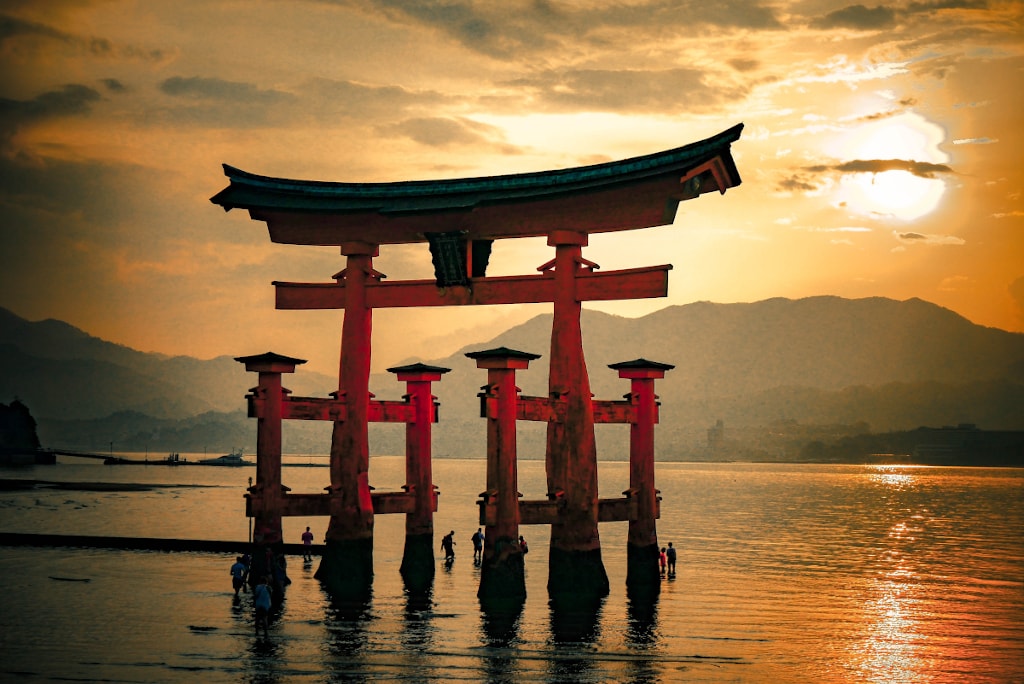
The floating huge red torii (gate) to Itsukushima shrine in Miyajima is perhaps Hiroshima's most iconic view
The creation of the centre of power
In 1589, Mori Terumoto established Hiroshima castle and gave the area the name Hiroshima which literally means 'wide island' which put it at the centre of power due to its key strategic position protected by mountains, but with easy access to the sea.
The Asano clan built the beautiful Shukkei-en gardens and are connected with many of the shrines and temples along sacred Mt. Futaba, near present day Hiroshima station. They retained power until the feudal system was outlawed in 1871.
Download my "7 Delicious Hiroshima Food Experiences" guide:
Neighbouring port towns
The nearby port towns of Kure, Onomichi and Ujina have been hubs of trade, entertainment and naval bases for hundreds of years. Today, many visitors enjoy a day trip to Kure to learn about its naval history, and all the ports have ferries to nearby islands for sightseeing, cycling, hiking, stays and leisure activities.
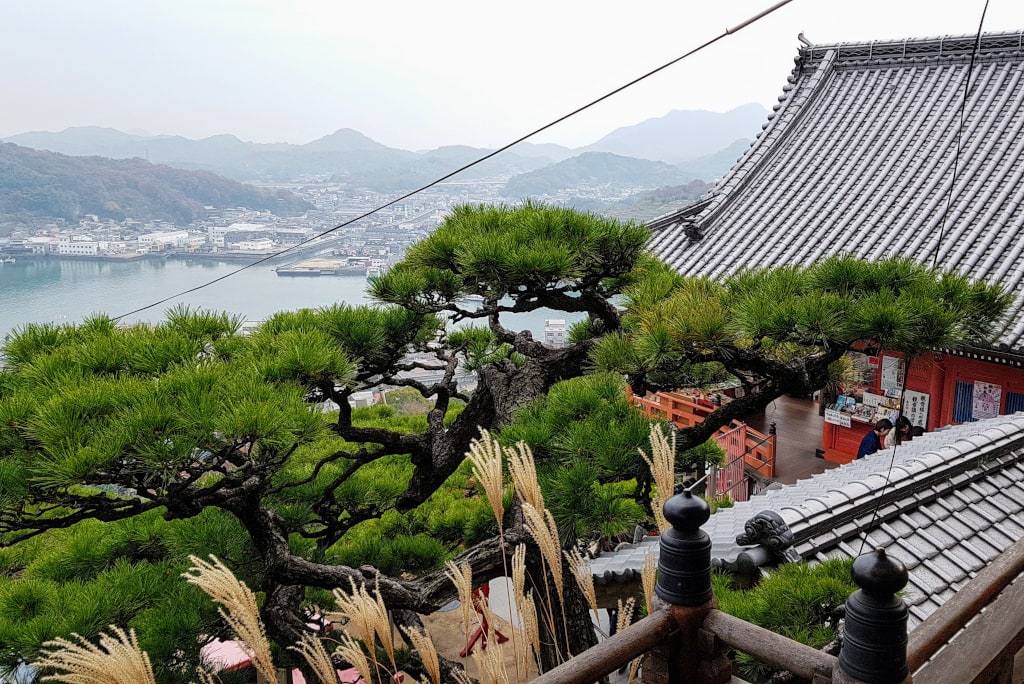
Views over Onomichi from Senkoji Temple, Senkoji Mountain
Post-war Hiroshima has seen the rise of international events in line with its peace brand- such as hosting international conferences like the G7, peace memorial ceremonies, anti-nuclear rallies, and peace-themed festivals.
A variety of successful businesses in Hiroshima date back to the time the castle created a stronghold in the area, and now many local entrepreneurs continue to offer a variety of unique products and services. Hiroshima is well-known for its high-quality sake, gin and craft beers as well as citrus, olives, and oysters.
Cycling, chocolate, cars, sake and luxury hotels
One-of-a-kind products and services such as the Shimanami cycle route, locally made USHIO chocolate as well as boutique lodges like the floating luxury hotel Guntu, and the innovative LOG hotel in Onomichi.
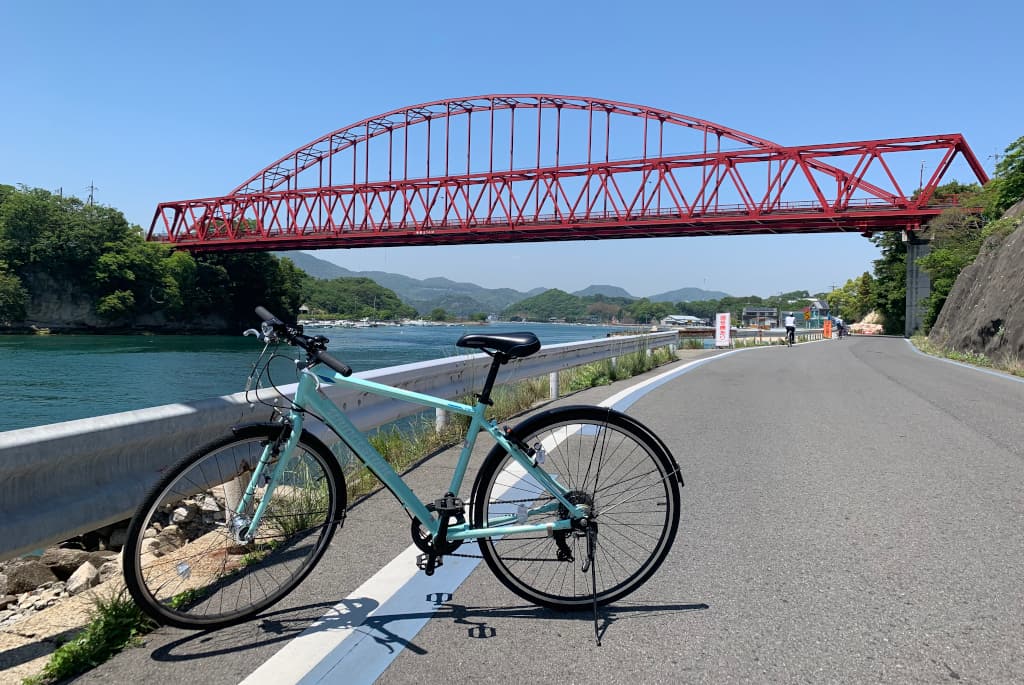
The Shimanami-kaido is a 70km (45mi) cycling route spanning several islands starts in Onomichi | Photo: JJ Walsh
Hiroshima is considered one of the top-3 sake-making regions in Japan thanks to its soft water- regular sake tastings and events are held as well as the Sake Festival in the sake town of Saijo.
One of Hiroshima’s most famous brands is the flagship Mazda facility which also sponsors the city’s Carp baseball team’s new ‘Zoom-Zoom Stadium’ transitioned from creating munitions during the war to making cars and machinery post-war.
A new soccer stadium for the J-League Sanfrecce Hiroshima team is set to open near the castle in 2024.
Where is Hiroshima?
Hiroshima is a city in Hiroshima Prefecture about halfway down the central island of Honshu. 4 ½ hours from Tokyo to the east, and 2 hours from Kyoto. If you’re heading south to the island of Kyushu, it is only an hour to Fukuoka.
The Climate in Hiroshima
CURRENT WEATHER
The winters in Hiroshima are mild but the summers are hot and humid.
The area is green thanks to regular intervals of rain throughout the year. The spring and autumn months are considered the most comfortable, but lively summer festivals and clear blue skies in winter make those seasons popular for visitors as well.
VIDEO: Discover Hiroshima City
When to Visit Hiroshima City
Hiroshima is beautiful in spring for cherry blossoms and in autumn for fall foliage, but there are interesting festivals and beautiful views to enjoy throughout the year.
Summer is hot, but also the best time to visit for the city’s key peace events and traditional cultural and fireworks festivals. Winter is becoming a popular time to visit for the illumination festival at night and clear skies in the day.
What To Do In Hiroshima: Seasonal Events and Festivals
Winter in Hiroshima
January is the time of New Year shrine visits in the beginning of the month to pray for good fortune and buy new good luck charms. At the end of the month, Tondo bonfires are held around the city to burn the previous year’s good luck charms in a sacred bamboo fire.
February is the time of Setsubun festivals to dash out the demons and welcome in the good luck. Gokoku-jinja on the castle grounds has a popular Setsubun festival each year with priests shooting arrows at demon faced targets and lucky-bean throwing.
Spring in Hiroshima
In March and April the city is covered in the white and pink flowers of ume and cherry blossoms when people enjoy Hanami picnics under the blossoms- the most popular areas are around the castle and along the rivers.
In May, the flower festival takes over the city center during the golden week holidays with thousands of food stalls, floats, musical performances and an exciting Yosakoi dance parade.
RELATED: Sakura: Beautiful Cherry Blossom Festivals in Japan
Summer in Hiroshima
In June and July the city is populated by colorful yukata (summer kimono) wearing festival goers for early summer events.
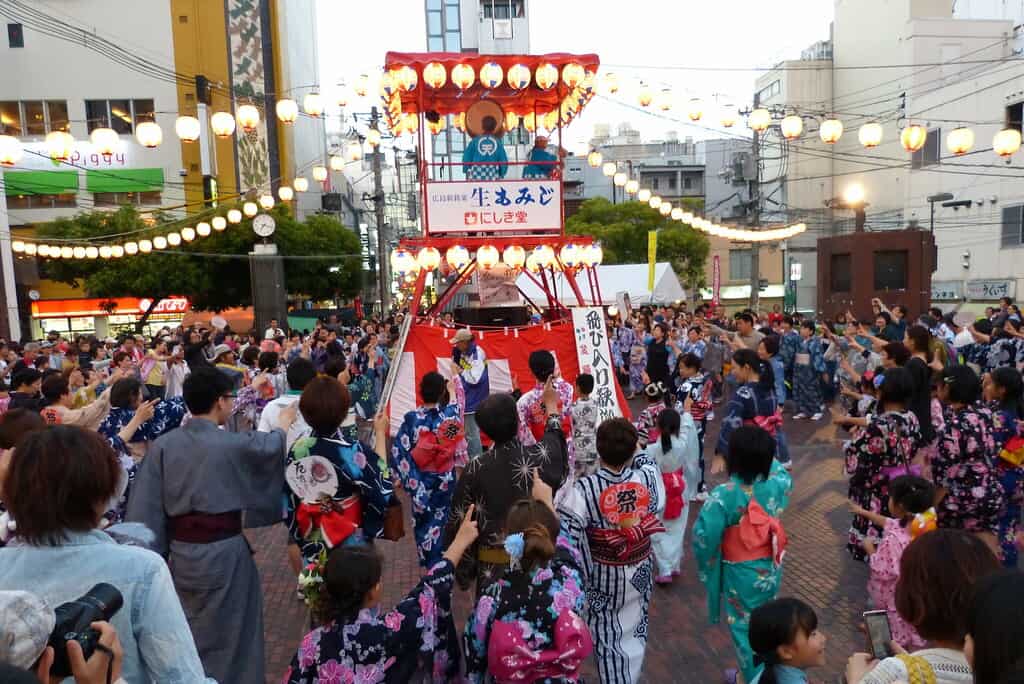
The annual Toukasan yukata festival takes place Held every year for three days starting on the first Friday of June | Photo: JJ Walsh
Held every year for three days starting on the first Friday of June, the Toukasan yukata festival is an annual event signalling the start of summer and dates back 400 years.
RELATED: Is It Rude (For Foreigners) To Wear Kimono?
The week surrounding August 6th commemorations is when hundreds of thousands of people seek out the city for peace conferences, talks, exhibitions and related events in summer. The evening of the 6th is stunning with colorful lanterns floating on the river in front of the A-bomb dome.
Autumn/Fall in Hiroshima
In October, enjoy Halloween fun at the Yokogawa town’s zombie night, or head to the Hiroshima castle grounds to enjoy the food festival stalls set up around the moat.
In November, Shukkeien gardens opens at night for fall leaves viewing in combination with the best time to enjoy moon views. From mid November through Janurary, stroll the lights after sunset at the Dreamination illumination event set-up the long Heiwa-Odori Peace Boulevard each year.
SEE ALSO: 6 Great Spots to See Spectacular Autumn Leaves in Japan
Hiroshima Travel Guide: How to Get Around
Hiroshima is easy to get to by air or bullet train. Once in the city, travelling around is easy with its range of public transport options. Hiroshima city is easily walkable from the station to the city’s main sights in and around peace park. You can also rent a bicycle near the station and enjoy all the major sites by riding along the rivers.
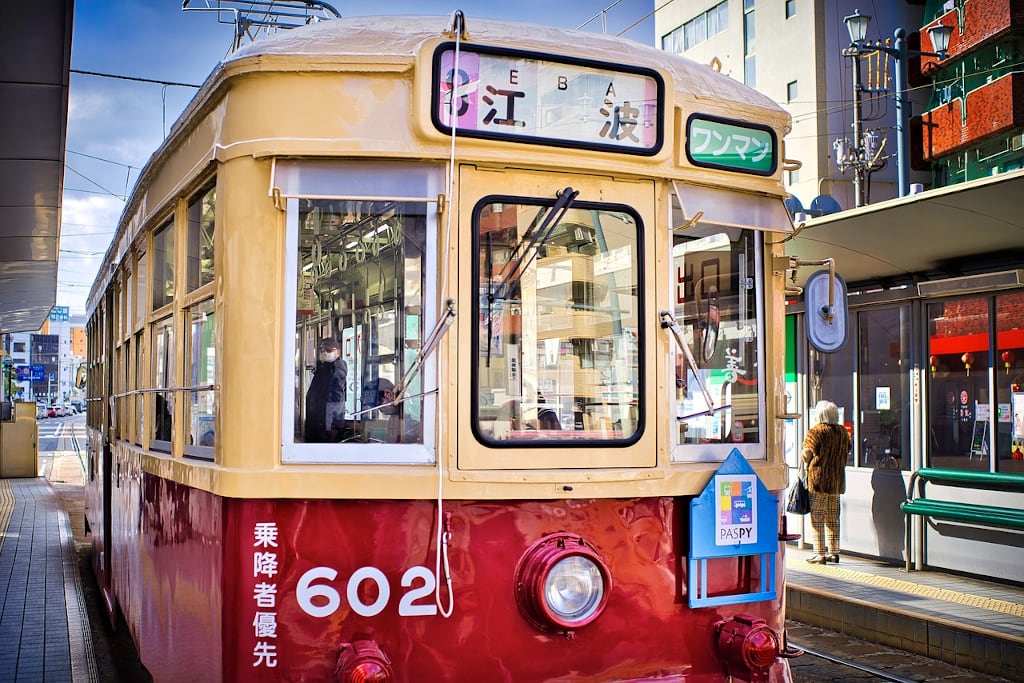
Classic trams (streetcars) travel around the city and out to the ports, even to Miyajima
Classic trams (streetcars) travel around the city and out to the ports - even to Miyajima where you can catch a short ferry to the famous island of the UNESCO Itsukushima floating shrine.
There are also many bus lines including the tourist Maple Loop bus which is free to ride with a Japan Rail Pass. Visitors can ride local JR trains to Miyajima and interesting sites just outside the city centre. There is also an ASTRAM monorail to take you in and out of the city to the suburbs.
To save yourself hours of planning, you can grab my comprehensive Hiroshima Google Map, which comes pre-loaded with my top attractions, hotels, and restaurants as mentioned in this guide.
PRO TIP:
Using JR Pass on Hiroshima sightseeing buses
You might be surprised to learn that the Japan Rail Pass is also valid on Hiroshima's sightseeing buses.
There are four site seeing bus routes and all start and finish at Hiroshima Station (JR trains). Stops include downtown, Hiroshima Castle, Atomic Dome, Peace Memorial Park, Kamiyacho and Hiroshima Station.
Have your JR Pass or Kansai-Hiroshima Area Pass ready to show to the driver on boarding the bus. The driver will note down or take a photo of the pass number as proof of eligibility. Ride the bus as normal. There is no requirement to show the pass when exiting the bus.
Read my Japan Rail Pass Ultimate Guide HERE.
Read my Regional Japan Rail Pass Guide HERE.
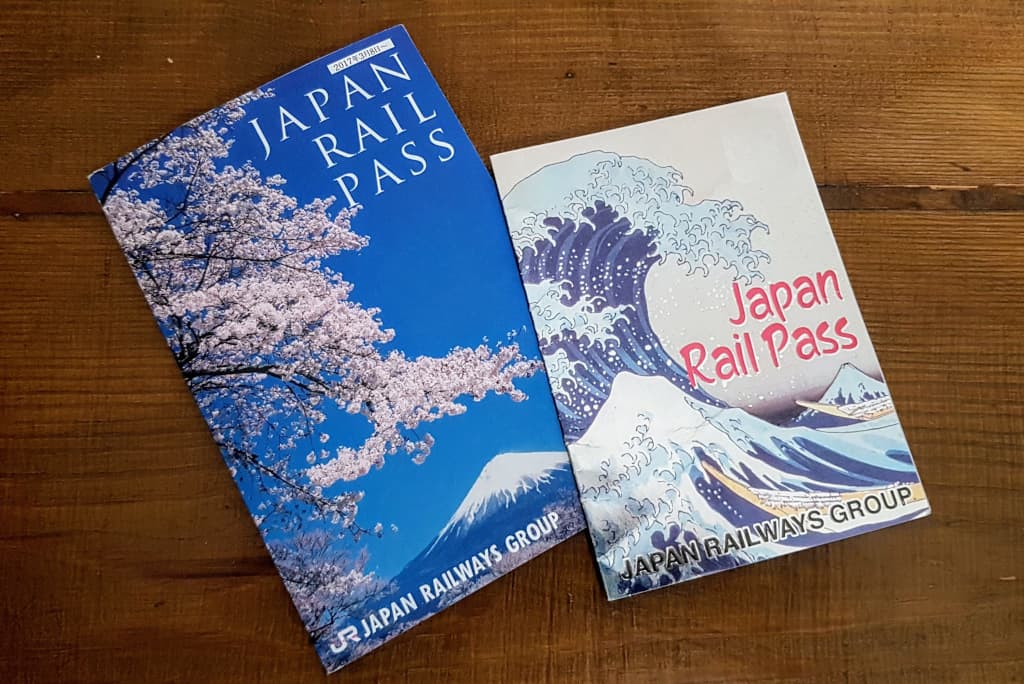
Top Attractions in Hiroshima
Hiroshima city centre attractions are focused around the expansive Peace Memorial Park that has the UNESCO ‘A-bomb Dome’ ruins on one end and the Peace Memorial Museum and the Gates of Peace at the other end about 800 metres away.
Peace Memorial Park: The A-bomb Dome
The Genbaku-dome - or A-bomb dome - is a powerful reminder of the devastation a nuclear attack had on the buildings and people of Hiroshima.
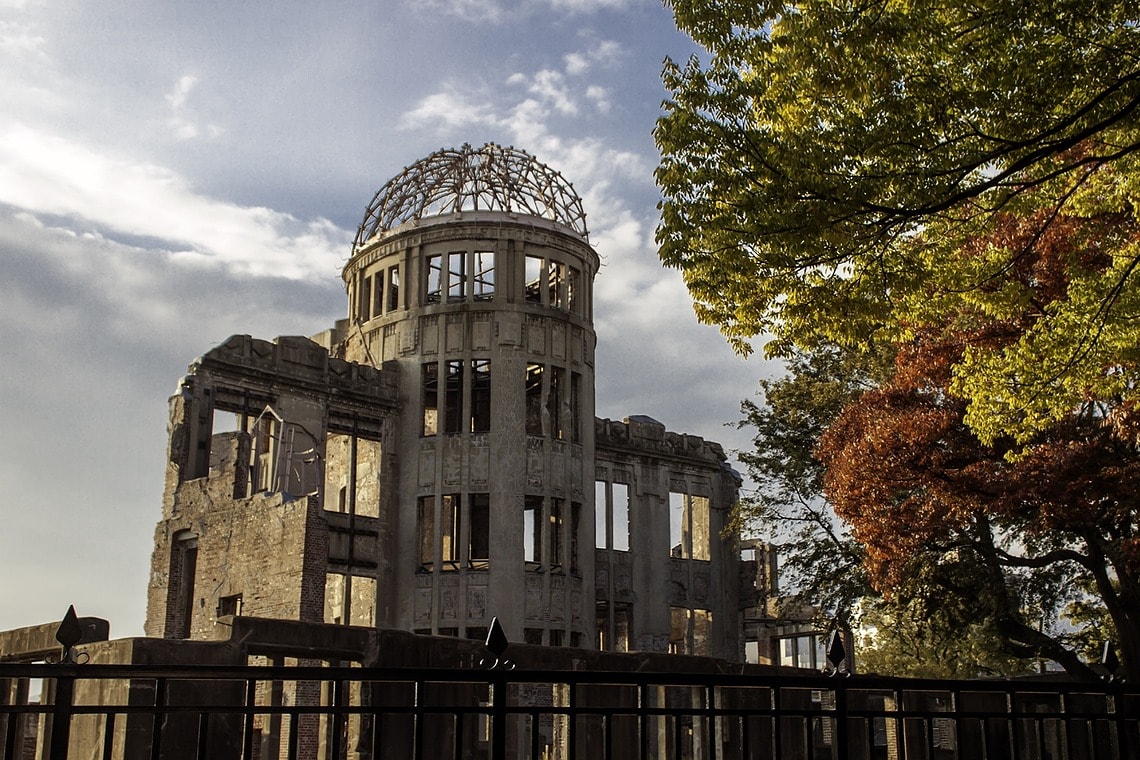
Genbaku-dome - or A-bomb dome - is a powerful reminder of the devastation a nuclear attack had on Hiroshima
Inside the park, you will find key monuments and sights along the central ‘peace line’ where you can view the A-bomb dome, children’s monument, eternal flame, cenotaph and memorial museum without a break in the view.
The children’s monument and its many strands of 1,000 folded orizuru cranes symbolize good luck, but also wishes for peace thanks to the fellow students of Sadako Sasaki who died of radiation caused cancers ten years after the blast.
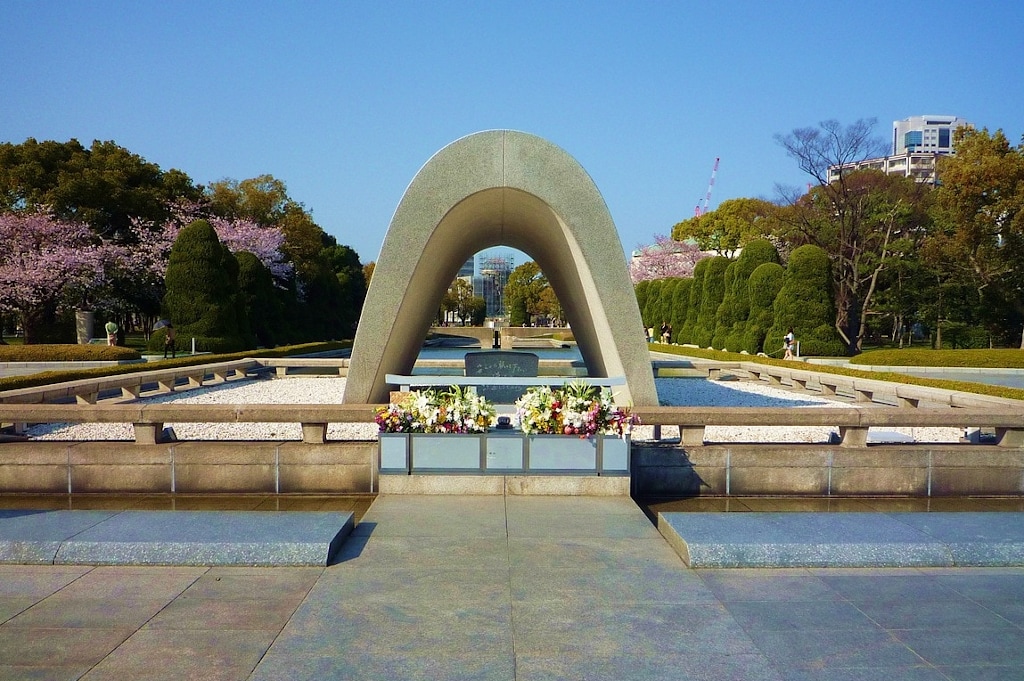
A centrepiece of the Peace Park is the Cenotaph, designed to resemble Japan's ancient burial mounds
The Cenotaph and Reflection Pool
The central Cenotaph is a sombre and sacred place which was designed like an ancient burial mound. Here locals and visitors light incense and lay flowers to pray for the souls of the dead, taking in the reflection pool and eternal flame behind the arch.
Near the A-bomb dome ruins is the ‘Orizuru Tower’ souvenir shop, cafe and museum structure which offers history and activities inside as well as a stunning viewpoint at the top looking into the A-bomb dome and out across the entire city.
Walk down the central ‘Hondori’ from the peace park’s main bridge through Hiroshima’s main shops, business and into the Nagarekawa nightlife area.
Hiroshima Castle and Gokoku-jinja
Walk north from the A-bomb dome along the river and find the Hiroshima Castle (sometimes referred to as Carp Castle) rebuilt in its original design from 1589. The replica now serves as a museum of Hiroshima's history before World War II.
Walk around the moat to take in the beauty of the trees, moat and castle views and take note of the impressive A-bombed surviving ‘HibakuJimoku’ trees which gave hope to people in Hiroshima when they grew back.
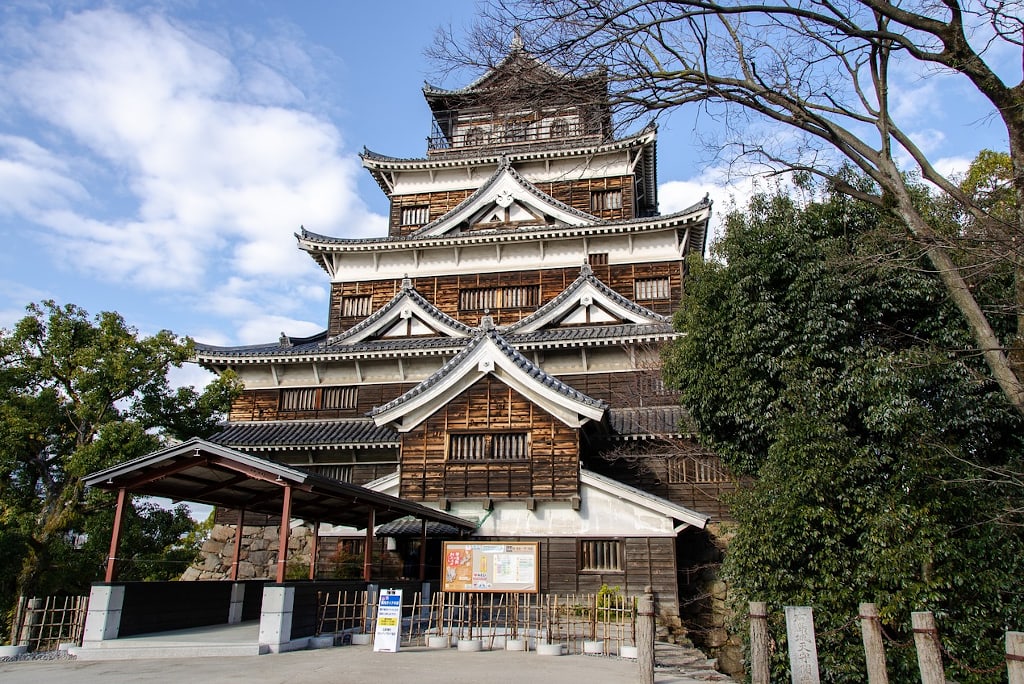
Hiroshima 'Carp' Castle was rebuilt in its original design from 1589
Visit Gokoku-jinja shrine in the castle grounds. There is limited English, but many visitors enjoy the exhibits, old pictures and samurai armor displays in the castle museum as you make your way up to see the stunning views from the top at the lookout.
Shukkei-en Zen Gardens
Shukkei-en gardens is a popular attraction as you can enjoy a shrunken landscape built by zen tea ceremony master Ueda Shoko.
A short walk from Hiroshima castle, it is a beautiful place to take a walk around the central pond to enjoy seasonal changes in blossoms and leaf colour, tea houses and ornate bridges and stone lanterns. The adjacent prefectural art museum often has interesting international and domestic art on display- buy a combo-ticket to enjoy both art and garden.
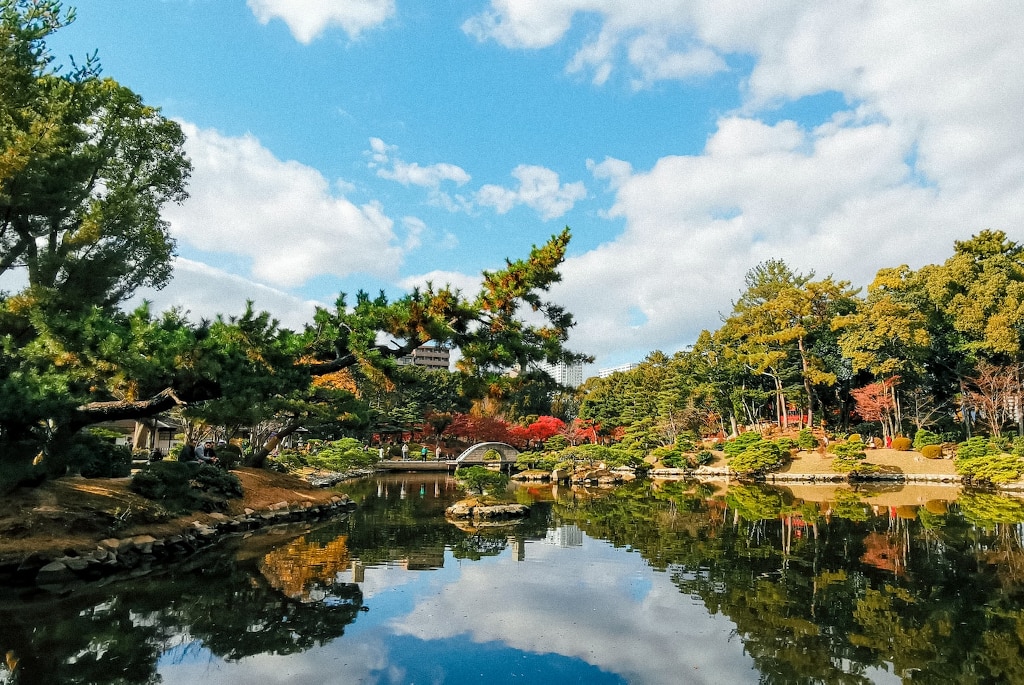
Shukkei-en Garden was designed by the zen tea ceremony master Ueda Shoko
Museums of modern art, Deshio warehouses and Mazda cars
On the other side of the city from the peace park, along peace boulevard, is the park and modern art musuem of Hijiyama set to reopen in 2023. Travel south from Hijiyama on the other side of the tunnel toward the port of Ujina and you will find the largest A-bombed ruins in Hiroshima - the Army clothing depot warehouses of Deshio.
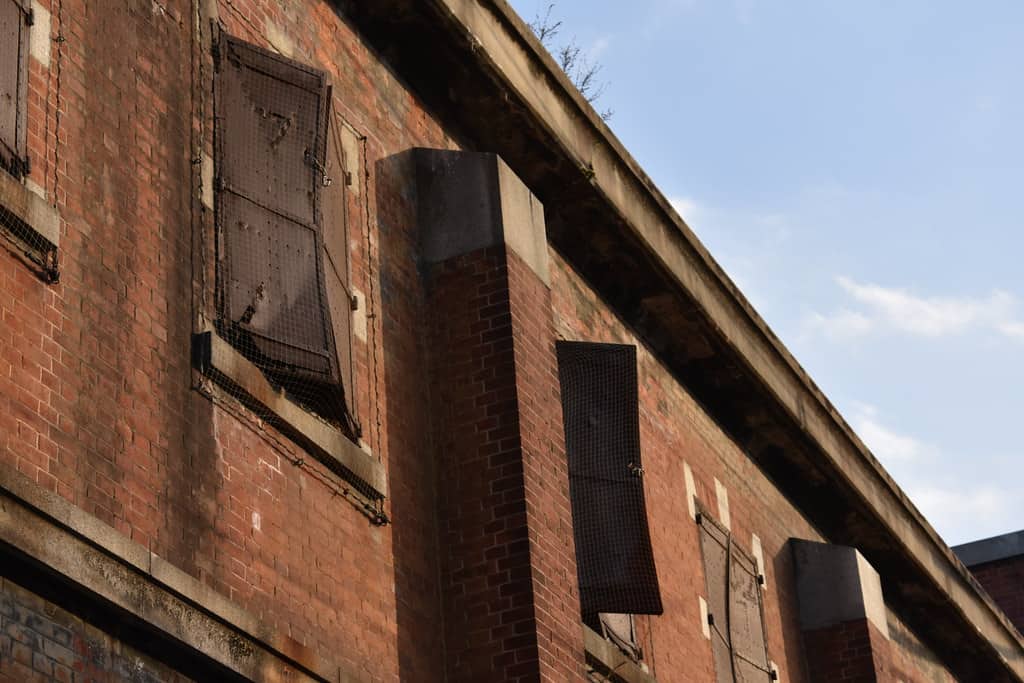
The A-bomb damaged warehouses of Deshio are the largest surviving buildings of the bombing | Photo: JJ Walsh
Car-enthusiasts will want to visit the Mazda factory and museum, and a chance to watch a Carp baseball game at the Mazda “Zoom Zoom” stadium is also lots of fun. Both require advanced bookings.
Peace Pagoda & Toshogu Shrine
On the other side of Hiroshima station, hike up to the silver ‘Peace Pagoda’ for city views by walking through hundreds of red torii-gates in the forest behind the colorful Toshogu shrine.
Heading along the main street in front of Toshogu shrine, you can find many shrines and temples dating back hundreds of years featuring many interesting 7-lucky gods statues and beautiful architecture.
VIDEO: 12 Top Rated Tourist Attractions In Hiroshima
Food in Hiroshima: okonomiyaki and oysters
Okonomiyaki, a layered vegetable, meat and noodle dish is a signature food popular across Japan, but invented in post-war Hiroshima as the put together a filling meal from simple ingredients.
If you fancy sampling this signature dish, then head for the heart of downtown Hiroshima and Okonomimura (literally 'Okonomi Village'), where you'll find over 25 okonomiyaki restaurants spread across four floors, each offering its own twist on this humble pancake.
SEE ALSO: Ajinoya Restaurant Osaka: Japan’s Best Okonomiyaki?
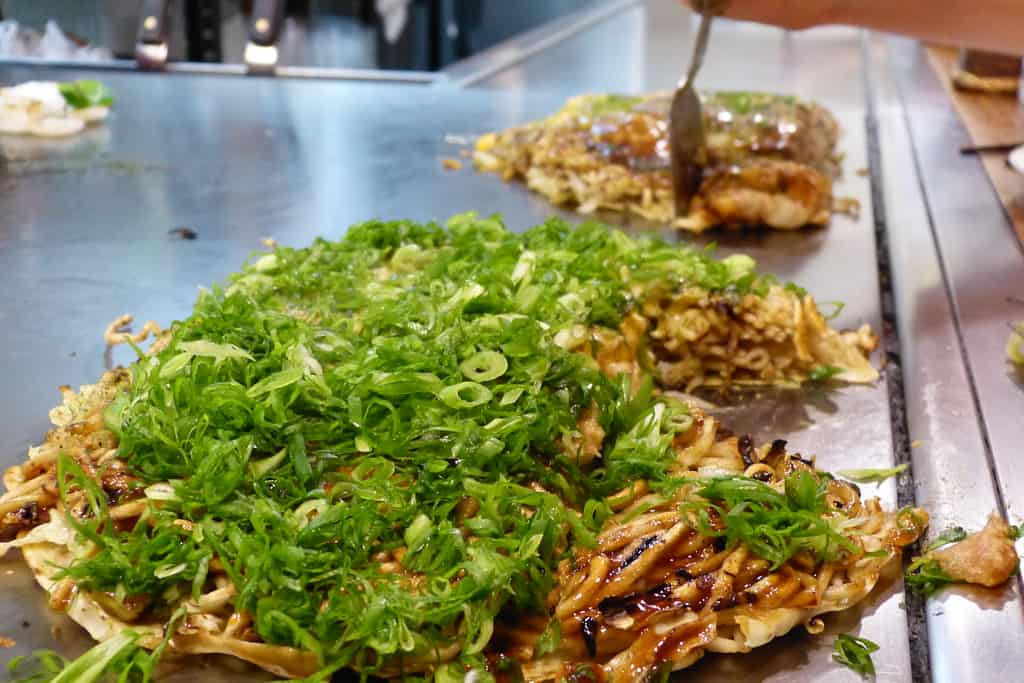
Hiroshima okonomiyaki rivals that of its famous Osaka counterpart | Photo: JJ Walsh
Oysters raised off the coast of Hiroshima are also highly rated by seafood lovers- especially when visiting Miyajima island. For sweets, try some Momiji-manju maple leaf shaped cakes filled with sweet beans, chocolate or custard.
The city also has a growing cafe culture with a good selection of quality coffee shops where you can stop at for a break from your sightseeing. Check out this guide to some of Hiroshima's best coffee shops.
Download my "7 Delicious Hiroshima Food Experiences" guide:
As citrus grows well here, you will find many local products made with oranges and lemons including the unique condiment for okonomiyaki, oysters and other savory dishes called LEMOSCO.
RELATED: 15 Must-Try Japanese Foods
Book Hiroshima food experiences
The Real Japan has partnered with byFood, specialists in Japanese food experiences, to offer an expertly curated selection of the finest, most fun and tastiest food experiences Hiroshima has to offer.
The folks at byFood believe one of the best ways to experience Japanese culture is to dive in with your chopsticks. And I agree!
If you want to sample a bit of everything the friendly and vibrant downtown Hiroshima has to offer, then the Ultimate Hiroshima Food Tour is the perfect experience for you. Explore local shopping streets while tasting Hiroshima-style Okonomiyaki, Tsukemen dipping noodles, and more.
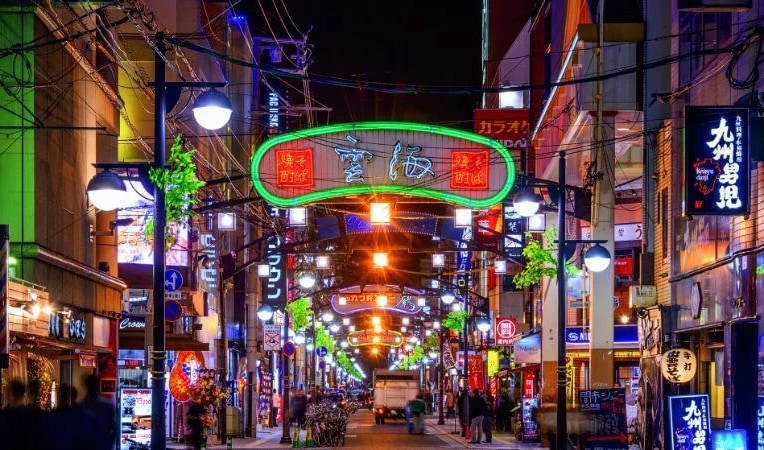
Sample the best that downtown Hiroshima has to offer on the Ultimate Hiroshima Food Tour
If sake is more to your taste, then check out the Hiroshima Sake Town Tour in Saijo. It includes visiting 4-6 local sake breweries in Saijo - Hiroshima's sake district - and learn about their sake brewing productions and, of course, sample their brews. Finish your tour at a local restaurant where you can eat for Bishu Nabe, a local style of hot pot - made with sake!
You can see all the Hiroshima food experiences on the byFood website HERE.
Download my "7 Delicious Hiroshima Food Experiences" guide:
Day Trips from Hiroshima
Miyajima Island and the floating Itsukushima shrine and red torii
No Hiroshima city guide would be complete with mention of Miyajima island. Its famous UNESCO floating Otorii - giant red Torii gate - and floating Itsukushima shrine are top of the list for most travellers to Hiroshima, but to avoid the crowds aim to arrive before 9am or after 3pm.
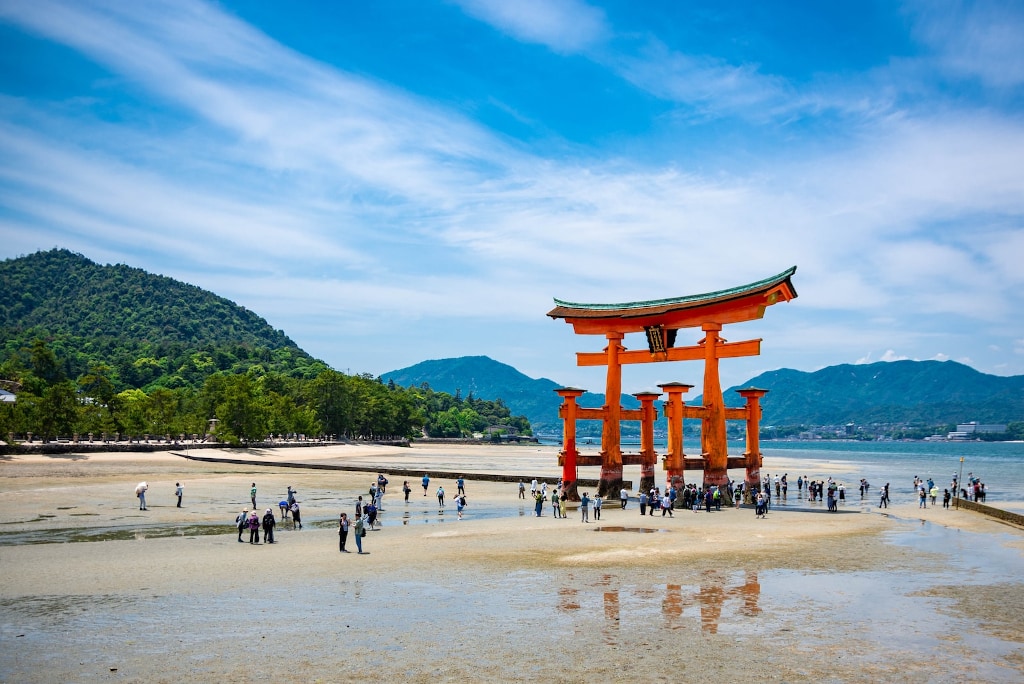
Miyajima island is a UNESCO World Heritage Site famous for it giant red torii shrine gate
If possible, plan to stay overnight on the island so you can enjoy the quiet beauty of the island without the overcrowding. It only takes 30 minutes to reach Miyajima station and then take a short ferry to the island, but there are a lot of sights to enjoy at a leisurely pace, so make sure to give yourself a half to a full day to enjoy the island.
If you are using a Japan Rail Pass you'll get a free ferry crossing to Miyajima as the ferry is also included in the JR Pass.
Miyajima: home to Japan sacred sika deer
Miyajima is also home to Japan's sika deer, thought to be messengers of the Gods in Japan's native Shinto religion, and are treated as sacred. Although the deer population has declined since World War II, the locals took to feeding them, meaning they are now well used to seeing humans.
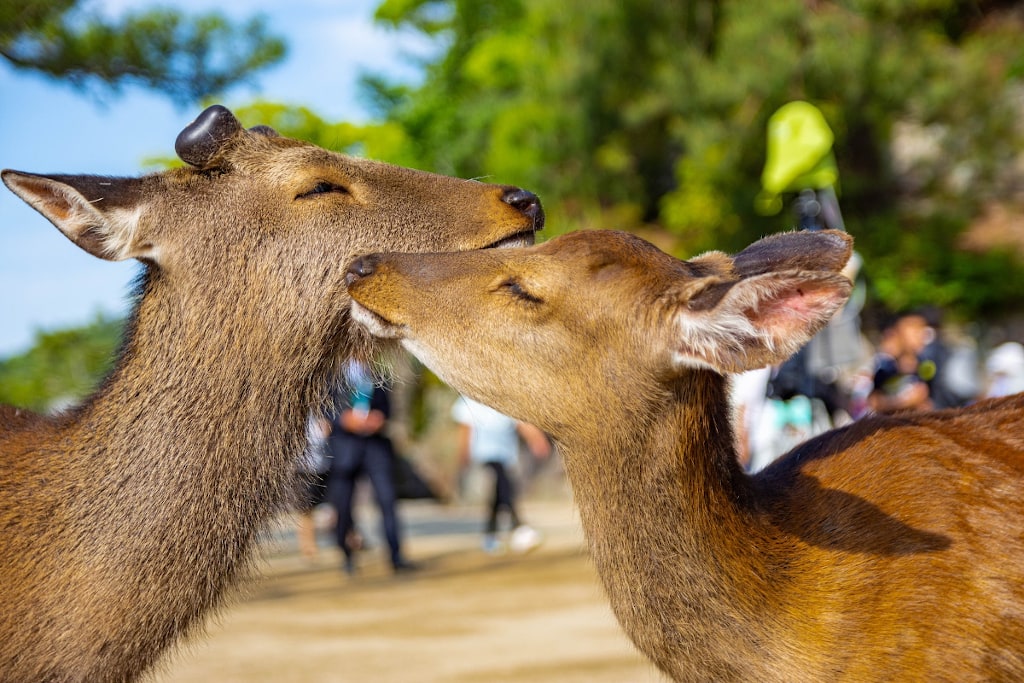
Miyajima island is also home to Japan's sika deer, considered sacred by the locals
'Rabbit Island' - feeding fluffy wild bunnies on Okunoshima
Okunoshima (aka 'Rabbit Island') and Takehara delight travellers who love the old town charms and feeding fluffy wild bunnies. You can take a train or bus in about an hour to Takehara and then another 20 minutes on to Tadanoumi port to get a short ferry over to rabbit island.
Okunoshima was actually erased from maps during the war as it was used as a poison gas factory. So, as you walk around and enjoy the cute bunnies, you can also learn about the island's military past and see the incredible contrast between its dark past and fluffy tourism appeal.
Make sure to pick up packets of the recommended rabbit food at the port to make sure the bunnies are getting the nutrition they need as you enjoy feeding them.
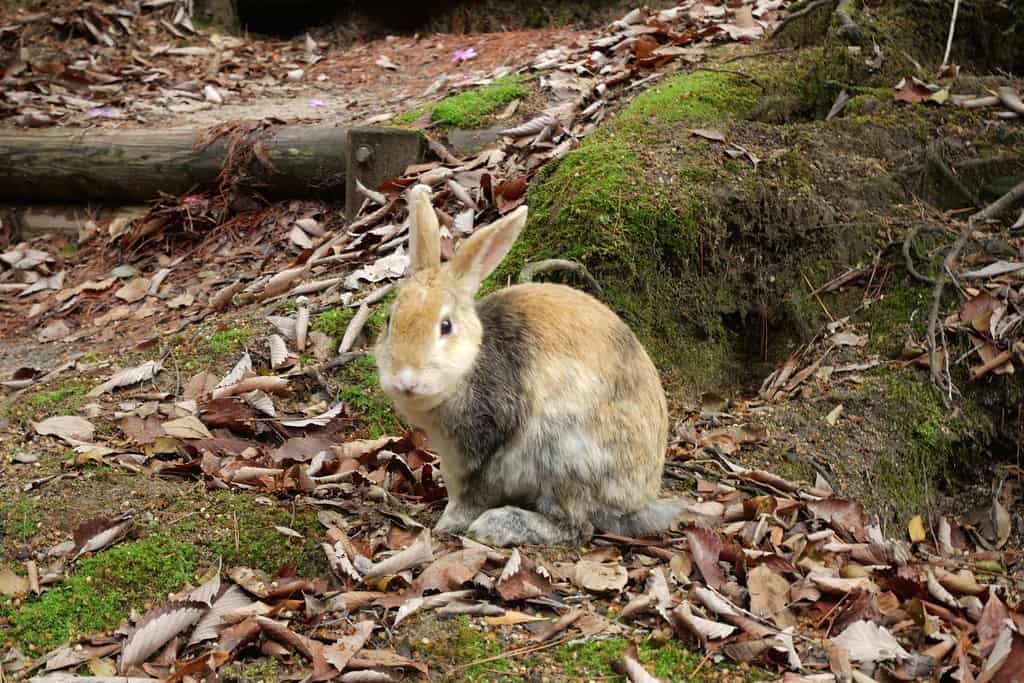
Rabbit island delights travellers who love old town charms and feeding wild bunnies | Photo: JJ Walsh
Kure's Battleship Yamanto Museum and beaches
Kure is a popular daytrip to see the impressive battleship Yamato museum and the submarine you can walk through. There is also an interesting retro-town center to walk through to eat the navy’s favourite curry and rice dish. Kure is less than an hour by train, bus or car from Hiroshima station. Kure also has great sake breweries to explore and beautiful swimming beaches in summer.
Mitarai: small town featured in Drive My Car
From Kure, visitors can also head over to the small town of Mitarai- this town was once a lively entertainment port filled with teahouses and geisha. It is now rebuilding with new entrepreneurs running cafes, a retro-toy museum, historical theatre has been reopened, and has a few nice temples and inns in addition to classic streets of old houses. Mitarai was featured in the 2021 Japanese film Drive My Car.
Onomichi: hidden charms to be found in this port town
Onomichi is a must-see spot for cyclists who want to ride the Shimanami Kaido route, but it is also one of Hiroshima’s nicest port towns.
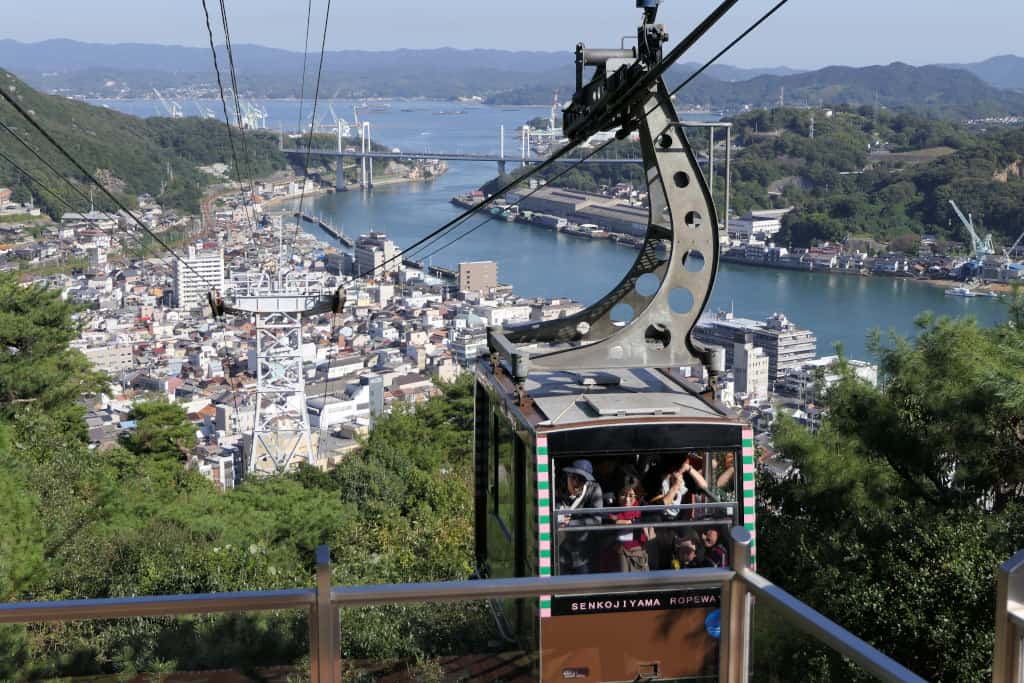
Take the Senkoji Ropeway for impressive views over Onomichi town and harbour | Photo: JJ Walsh
A very walkable town centre with one of the longest covered shopping streets in Japan, hillside temples offering great views of the harbour, and ferries take you to charming destinations like Setoda with its interesting temples, cafes and museum.
The town has been featured in many Japanese films and is famous for its traditional foods like ramen, and the Betcha demon mask festival, but also for its entrepreneurs running unique shops, galleries, a mix of Japanese and western foods, great coffee shops and the excellent Onomichi craft beer brewery.
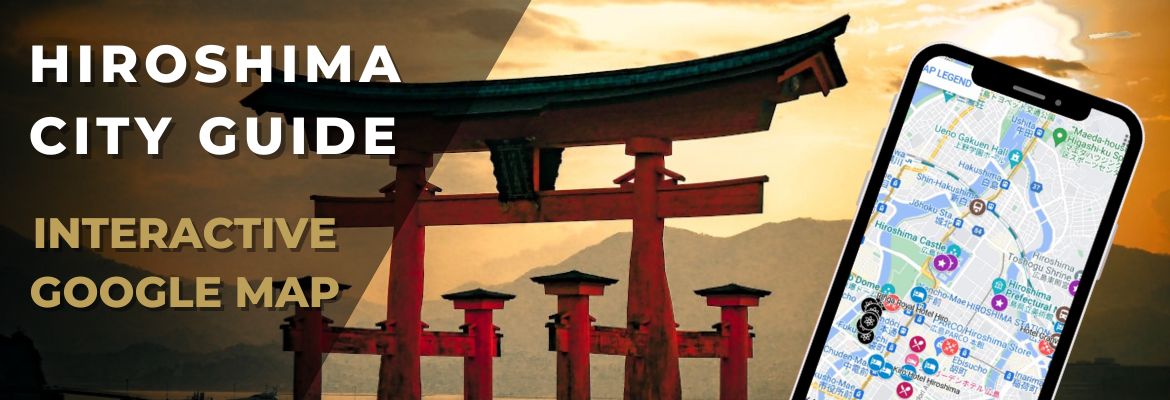
How to Get to Hiroshima
By Rail
From Tokyo, Kyoto, and Osaka the easiest way to get to Hiroshima is via the Shinkansen bullet train, specifically the San'yō Shinkansen service operated by JR West. This line is included in the Japan Rail Pass coverage.
Local trains also operated by JR West include the San'yō Main Line, the Kure Line, the Geibi Line and the Kabe Line.
By Air
Hiroshima is served by Hiroshima Airport, the largest airport in the Chūgoku region.
It's located 50 km (31 mi) east of the city, with regular flights to Tokyo (Haneda and Nartia), Sapporo, Sendai, Okinawa, and also to China, Taiwan, Singapore and South Korea. The Hiroshima-Haneda route is the fifth-busiest domestic air route in Japan.
Iwakuni Kintaikyo Airport, 43 km (27 mi) a military airbase south-west of Hiroshima, has a civilian airport terminal with All Nippon Airways (ANA) operating flights to Tokyo Haneda, and ANA Wings operating flights to Naha (Okinawa) and Tokyo Haneda.
SEE: Hiroshima Airport website (English version)
By Car
If you rent a car in Japan, you will have no problem finding your way to Hiroshima as it is connected to other big cities via toll highways. The drive from Tokyo to Hiroshima is around 800 km (502 mi), taking about 8 hours 30 mins. Hiroshima is 331 km (206 mi) from Osaka, with a drive time of just under 4 hours. Kyoto is a little further than Osaka, taking around 4 hours 15 mins.
By Bus
Willer Express operates an overnight highway bus from Tokyo to Hiroshima departing Shinjuku Station at 20:00, arriving at Hiroshima Bus Station at 09:00 the next day.
You can use a site such as 12GoAsia to check timetables and reserve seats on highways buses.
Where to stay in Hiroshima
In Hiroshima city: I’d recommend any of the hotels downtown along Peace Boulevard for great views and a convenient location for walking to shops and sightseeing. The KNOT is a popular hotel in a good location, also the Mitsui Garden and Dormy Inn as well as the new Hilton hotel gets good reviews.
Smaller hotels like the KIRO are also in a good area. Near the castle, a popular hotel is the Rihga Royal which overlooks the Hiroshima Castle grounds. If you want to stay near the station, the Sheraton Grand Hiroshima or Granvia Hiroshima are popular hotels with good views of the mountains.
Hiroshima Hotel Recommendations
Where to stay on Miyajima
Alternatively, you might want to actually stay on Miyajima Island itself.
Due to the small size of the island there are inevitably fewer hotels options. However, there are some really nice high end options for those looking to indulge in a bit of relaxing comfort during your stay on the island. Below are a few popular recommendations.
Miyajima Hotel Recommendations
I hope this introductory Hiroshima city guide inspires you to add it to your next itinerary. If you have any questions or feedback, please leave a comment below...
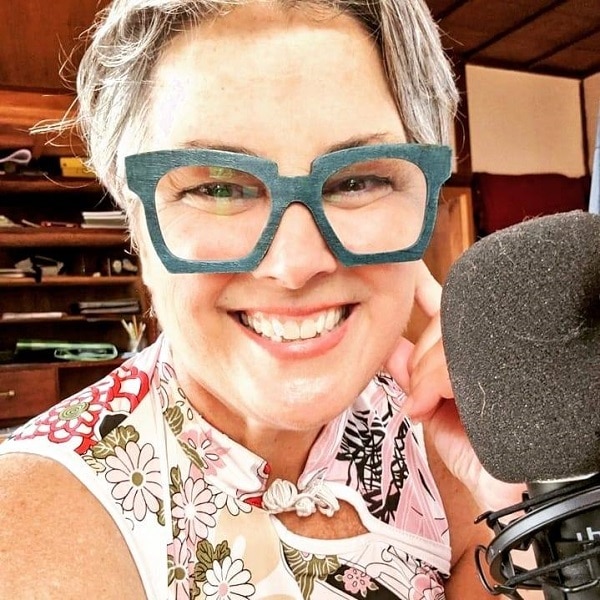
About the Author
JJWalsh from Hawaii, now calls Hiroshima home after 25+ years. She runs Inbound Ambassador, a sustainable travel-tourism consulting, content & training business. JJ also co-founded Get Hiroshima in 1999, and arranges bespoke tours in Hiroshima that promote sustainability. Her weekly talk show-podcast Seek Sustainable Japan has over 400 live interviews.
Location Guide Map: Hiroshima City
Resources
Download my "7 Delicious Hiroshima Food Experiences" guide:
Hiroshima City Guide Google Map
Everything you need to plan an book a trip
Get Hiroshima
Get Hiroshima - Be more than a tourist
Dive Hiroshima - The Official Guide To Hiroshima Website
Dive Hiroshima - Travel & Tour Information
JNTO Hiroshima City Guide
Things To Do In Hiroshima
GetYourGuide: Hiroshima Activities & Experiences
Recommended Hotels In Hiroshima
KIRO Hiroshima by THE SHARE HOTELS
Book Hiroshima Food Experiences
Join unforgettable food tours, cooking classes and dining experiences
Further Related Guides
5 Best Hiroshima Coffee Shops for Java Lovers
Tokyo, Kyoto & Hiroshima (Book Review)
Senkoji Ropeway Cable Car: Charming Onomichi City
Discover Shikoku: Island Guide
5 Insider Tips for Sustainable Travel in Japan
Sanuki Kagawa Uncovered – A Resident’s Intimate Travel Guide
More Destination Ideas
If you enjoyed this article please share this image:

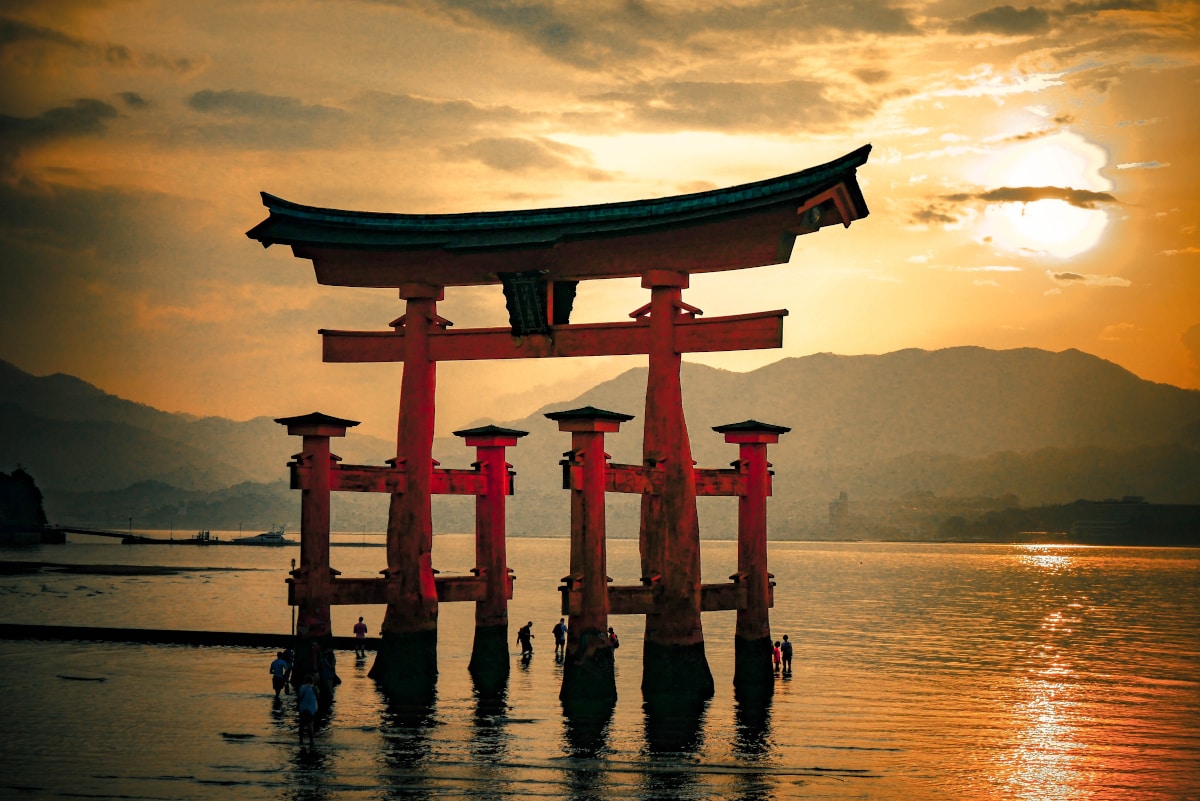

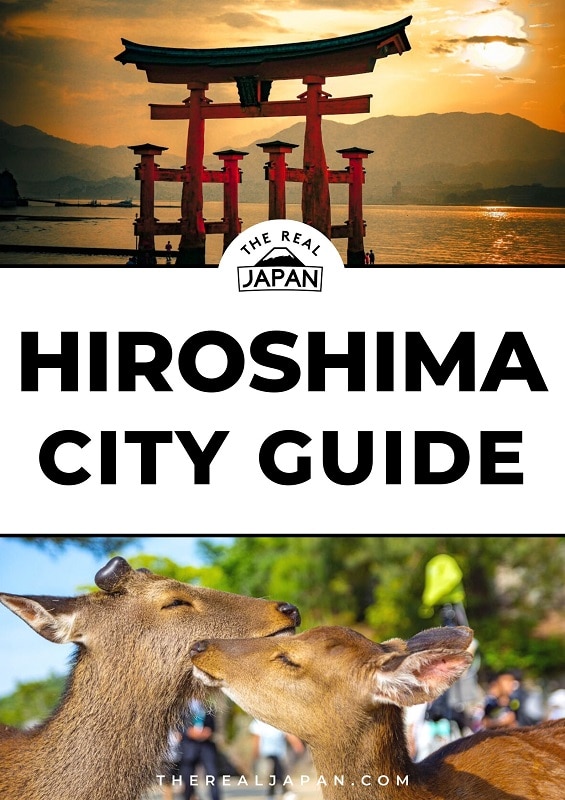
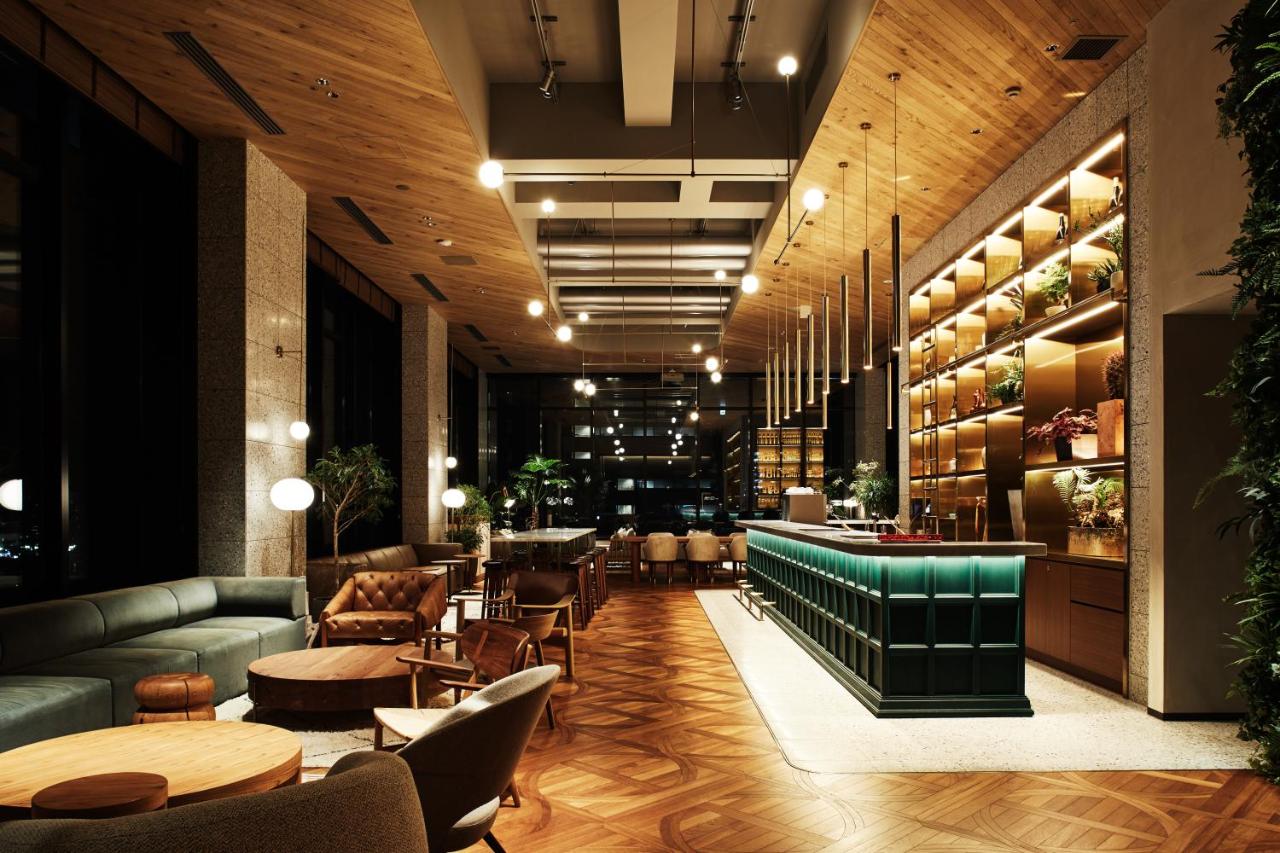
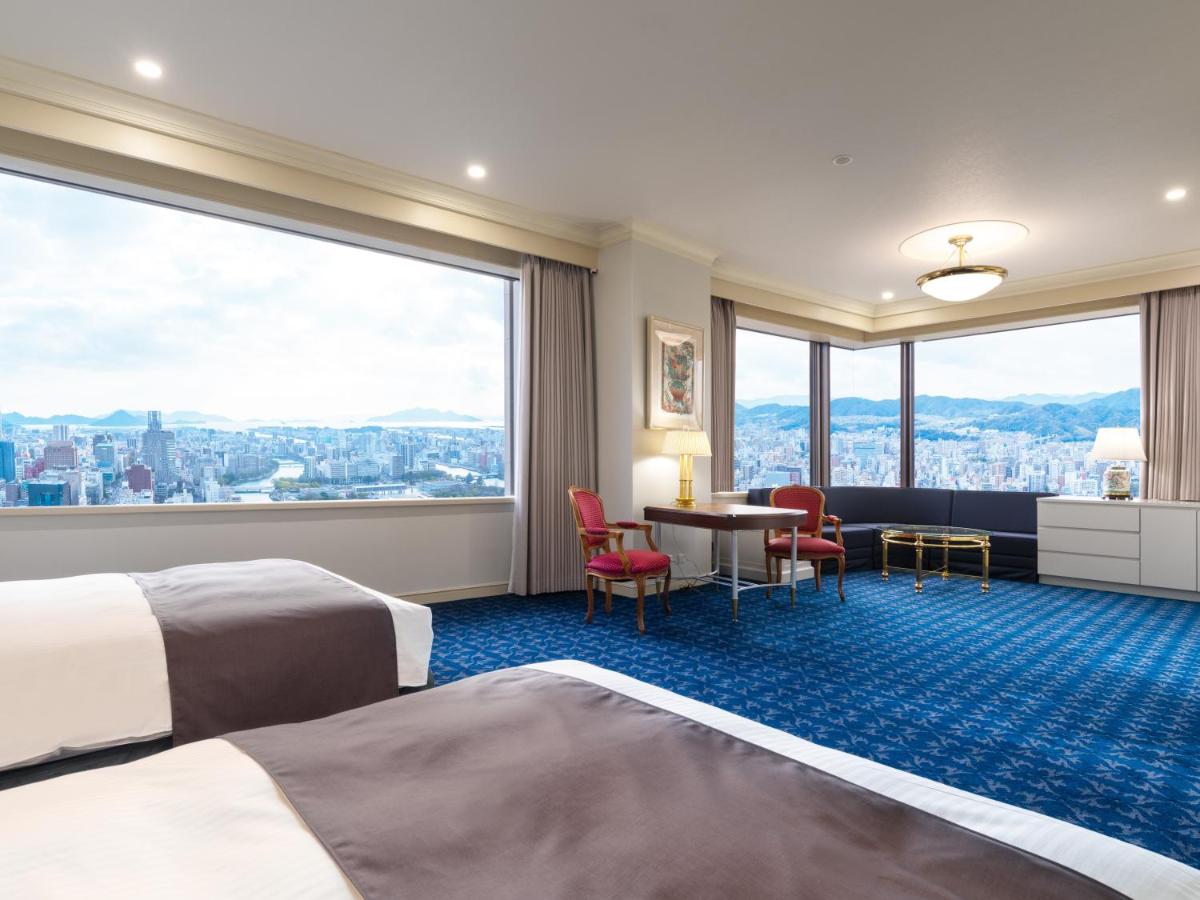
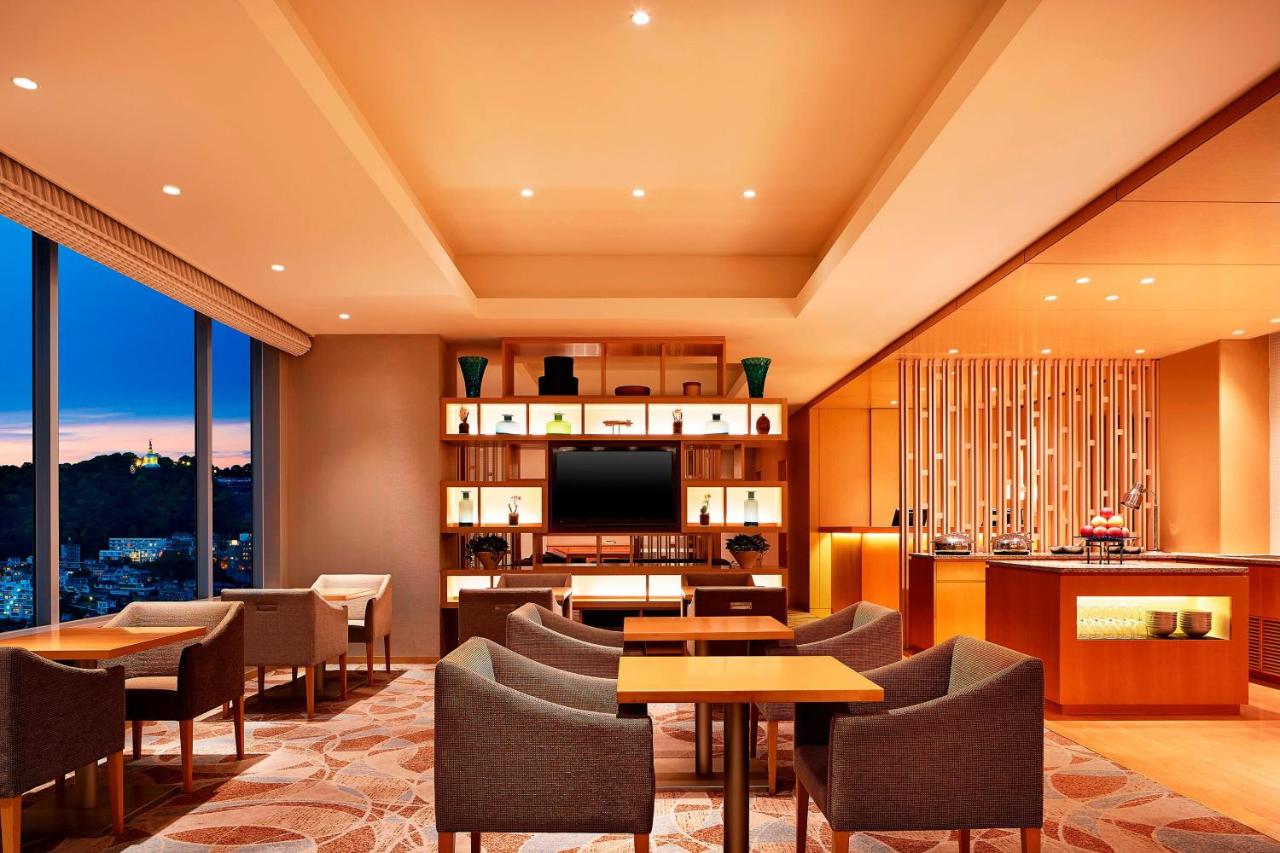



What a sensational guide. My wife lived in Hiroshima for 1 year before we met; she taught English there. She loved the city. I intend to visit of course.
Ryan
Thanks Ryan. JJ knows her stuff! What a historic place to have lived and taught English, and wat a nice trip it would be for your wife to return and for your to see Hiroshima.
Great article. I personally encourage visitors to include Hiroshima in their itineraries (and the Chugoku region as a whole if they have time). I have been in the Hiroshima twice this year without visiting Miyajima, great food and lots of places around Hiroshima that are worth seeing. The significance of this city and the Peace Museum cannot be under estimated, and must be a visit…but there is more to Hiroshima.
Thanks Stephen, I agree – Joy has created a superb guide here.
You’re right about there being more to Hiroshima than just its WWII history and I like that you and Joy both mention that there are some great places (like the port cities) close by that are definitely worth adding to any itinerary headed this way.
thanks Rob!
Thank YOU Joy!
I love to hear that you have been to Hiroshima twice this year – hope you can come again soon and see some new sights next time! Even as a local I always find new reasons to enjoy being here